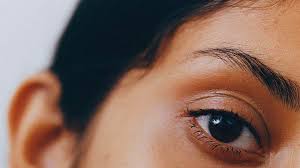
Best Dermatologist-Recommended Treatments for Dark Spots on the Face
Dark spots on the face are a common skin concern for many people. The right treatment depends on the type of spot, its cause, and your skin type.
Dermatologists tailor treatments based on these factors to deliver the best results.
What Causes Dark Spots?
Dark spots form when the skin produces too much melanin, the pigment responsible for skin color. This condition is known as hyperpigmentation.
Common causes include sun exposure, inflammation, acne, hormonal changes, and aging.
Why You Should See a Dermatologist for Dark Spots
Not all dark spots are harmless. Some may signal skin cancer or other serious conditions.
If your spot is raised, rapidly growing, changing shape or color, asymmetrical, larger than 1 cm, very dark, rough, or an unusual color (blue or gray), see a dermatologist promptly.
You can find board-certified dermatologists at AAD.org.
Different Types of Dark Spots Dermatologists Treat
Dark spots can appear after acne, sun exposure, or injury. Dermatologists treat many types including:
Age spots (also called liver or sun spots)
Melasma
Post-inflammatory hyperpigmentation (PIH) from acne or injury
Seborrheic keratosis (wart-like spots)
Freckles
Moles (which need to be checked for cancer risk)
Each spot type requires a specific approach for treatment.
Fastest Dermatologist Spot Treatments for Dark Spots
If you want fast results, dermatologists offer effective spot treatments, but none work overnight. Common procedures include:
Chemical peels
Cryotherapy (freezing spots with liquid nitrogen)
Laser therapy
Intense Pulsed Light (IPL)
Microneedling
Diode or pulsed light therapies
These treatments often work best when combined with topical skin-lightening products.
Why Skin Color and Type Matter in Treatment
Dark spots on brown or black skin need different treatments than on lighter skin. Treatments suitable for one skin tone may cause irritation or discoloration in another.
A dermatologist considers your skin’s unique needs before recommending options.
Combining Medical Treatments with Skin Care Products
Using a dermatologist-approved skin lightening cream or serum with in-office treatments speeds up fading dark spots. These products often include ingredients like hydroquinone, vitamin C, niacinamide, or retinoids.
When to Avoid DIY Spot Treatments
Over-the-counter treatments may help mild spots but can irritate sensitive or darker skin tones. If your spots are persistent or worsening, always consult a dermatologist to avoid damage or worsening pigmentation.
How to Build a Dermatologist-Recommended Skin Care Routine for Dark Spots
A strong skin care routine is vital. Here’s a dermatologist-backed 4-step guide:
1. Exfoliating Cleanser or Facial Scrub
Removes dead skin cells, boosts skin renewal, and helps lightening ingredients penetrate better.
2. Skin Lightening Serums
Choose products with effective ingredients like vitamin C, kojic acid, azelaic acid, or niacinamide. Alternate ingredients to prevent irritation.
3. Moisturizer
Use creams with unsaturated fatty acids that support skin barrier repair and do not interfere with lightening agents.
4. Retinoids (Retinol or Prescription Strength)
Promote exfoliation and inhibit pigment production, improving dark spots over time.
Knowing your Baumann Skin Type helps pick products that fit your skin perfectly, saving time and money.
Understanding Baumann Skin Type
Baumann Skin Typing assesses your skin’s oiliness, sensitivity, pigmentation tendencies, and barrier health. This helps tailor your dark spot treatments effectively.
Take a quick Baumann Skin Type quiz online to find your type and the best products for your skin.
Laser and Light Therapies for Dark Spots
Lasers are the fastest way to reduce dark spots on the face, arms, and hands. Types include pigment-specific lasers that target melanin.
After laser treatments, your skin may form scabs for 3-4 weeks. Using healing ointments helps recovery. Be prepared for redness and visible scabs during healing.
Makeup can cover scabs but may not fully hide crustiness.
Allow 5 weeks before any important event to let your skin tone normalize.
Other Dermatologist Treatments for Dark Spots
Chemical Peels: Remove top skin layers to fade spots gradually.
Cryotherapy: Freezes and removes certain raised spots, like seborrheic keratosis.
Microneedling: Stimulates skin repair and can help reduce pigmentation.
Mesotherapy with Tranexamic Acid: Used in some clinics for melasma.
Special Considerations for Melasma
Melasma is a tough type of hyperpigmentation caused by hormones. It requires a tailored skin care routine before trying lasers or peels, which can sometimes worsen it. Patience and consistency are key.
Treating Other Dark Spot Types
Sun, Age, or Liver Spots: These usually respond well to lasers, IPL, or freezing if flat.
Seborrheic Keratosis: Raised, rough spots need removal with freezing or lasers.
Moles: Must be evaluated for skin cancer risk before treatment.
Freckles: Can be lightened with laser but often return over time.
Tips for Dark Spots on Black and Brown Skin
People with darker skin tones should be especially cautious. Some treatments may cause hypopigmentation or worsening dark spots. Consult a dermatologist familiar with treating dark skin to avoid complications.
Summary: Best Dermatologist Approach to Dark Spots
Always have suspicious or changing spots checked by a dermatologist.
Choose treatment based on your spot’s cause and your skin type.
Combine in-office treatments with dermatologist-approved topical products for best results.
Be patient: dark spots take weeks to months to fade, even with the best care.
Protect your skin from sun exposure to prevent new spots and help treatments work better.
Find a Board-Certified Dermatologist Near You
Visit AAD.org to locate a dermatologist. They can diagnose your spots and design a personalized treatment plan.
Final Thoughts
Dark spots can impact your confidence, but effective treatments exist. Understanding your skin, seeking expert advice, and following a consistent routine are your best tools for clear, even skin.
Consistency is key when treating dark spots; skipping treatments can delay your results significantly. Always apply a broad-spectrum sunscreen daily to protect your skin from UV rays.
Sunscreen helps prevent new dark spots and stops existing ones from getting darker. Avoid picking or scratching at dark spots, as this can cause further pigmentation or scarring.
Incorporating antioxidants into your skincare routine can also help protect your skin from damage. If you notice any new or changing spots during treatment, inform your dermatologist immediately.
Some treatments may require multiple sessions for optimal results, so patience is essential.
Maintaining a healthy lifestyle, including a balanced diet and hydration, supports your skin’s healing process.
Remember that not every product works the same for everyone, so personalized advice is best. Lastly, always follow your dermatologist’s guidance for safe and effective care.


